- Wireless smartphone mirroring
- Aussie tuned ride
- Handsome styling
- Lack of Auto drivers window
- Not cheap
- Could be more efficient
The small SUV market is a relatively new one here in Australia with offerings only coming on the market in the last decade or so. Yet despite being a relatively new segment, it has exploded in both available offerings and customers for those offerings and looking around on any suburban streets proves this: small SUVs are everywhere. Today there are a plethora of different small SUVs for sale such as the Mazda CX-3, Mitsubishi ASX, Kia Stonic and the Toyota Yaris Cross. We tested the 2021 Hyundai Venue Active to see if it’s the small SUV to buy or whether there are better options.
For the 2021 model year, Hyundai updated the Venue range by renaming the entry level model (now just dubbed ‘Venue’), adding some new interior tech and changing the wheels for the entry-level and mid-spec models. It was a light update but these changes made the Venue a more competitive car in this strong market. But pricing was also pushed up even further, though more on that in a minute.
Price & Specs: 6/10
While the 2021 Hyundai Venue range kicks off with the entry level model that is simply called ‘Venue’ that starts at $20,940 plus on-road costs, we tested the mid-spec $24,870 plus on-road costs 2021 Hyundai Venue Active auto – or just under $29,000 drive away. Models that compete with the Venue Active are the $29,990 drive away Mazda CX-3 Maxx Sport auto and the $26,490 drive away Kia Stonic Sport auto.
The Venue Active comes with a decent amount of standard equipment for its class – 17-inch alloy wheels, an 8.0-inch colour touchscreen, wireless Apple CarPlay and Android Auto, a six-speaker audio system, remote keyless entry, electric windows, heated and electric folding mirrors, a leather steering wheel and gear knob, automatic halogen headlights, cornering lights, a front centre armrest, cruise control, drive mode selection with terrain control and roof rails are standard kit.
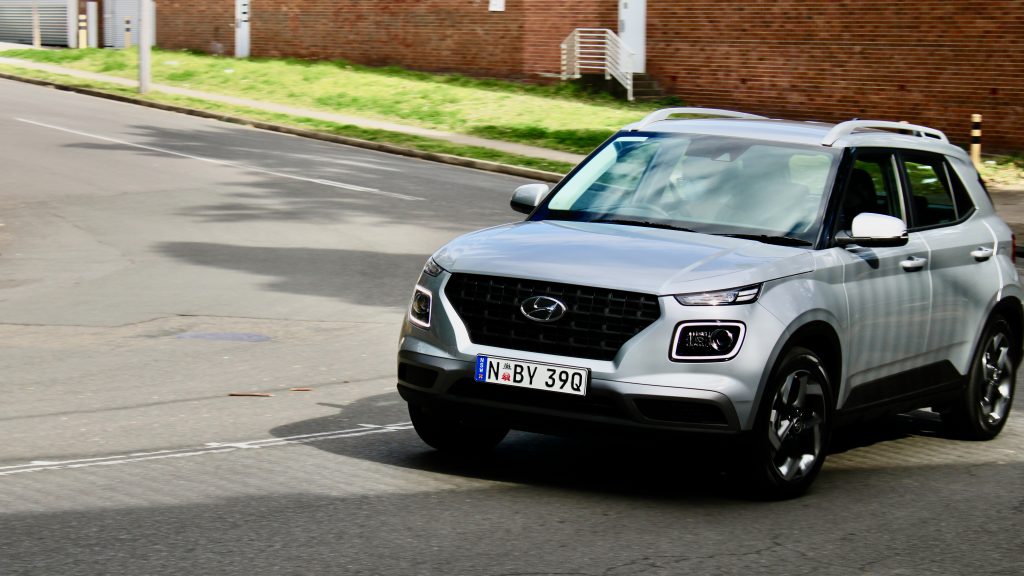
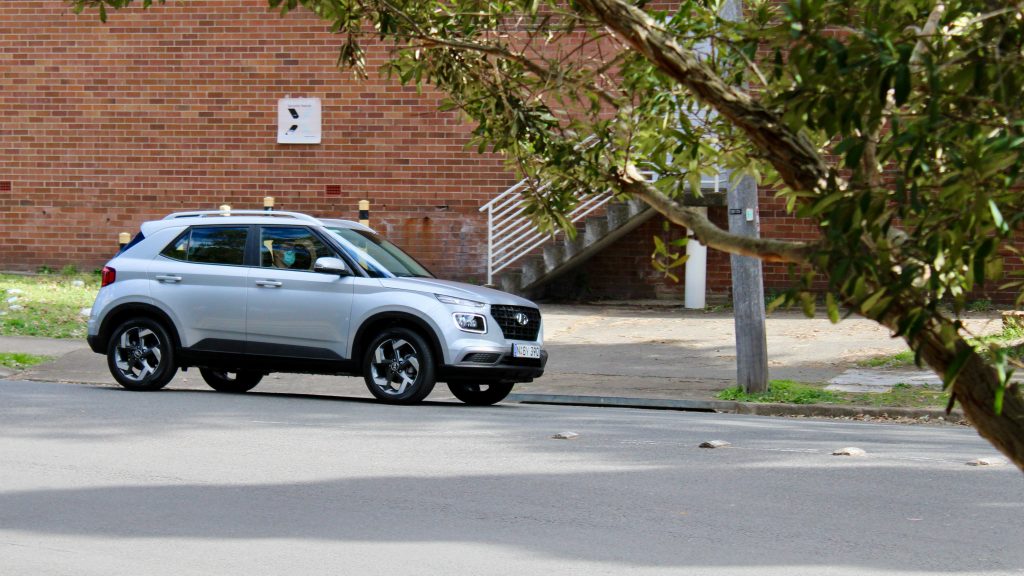
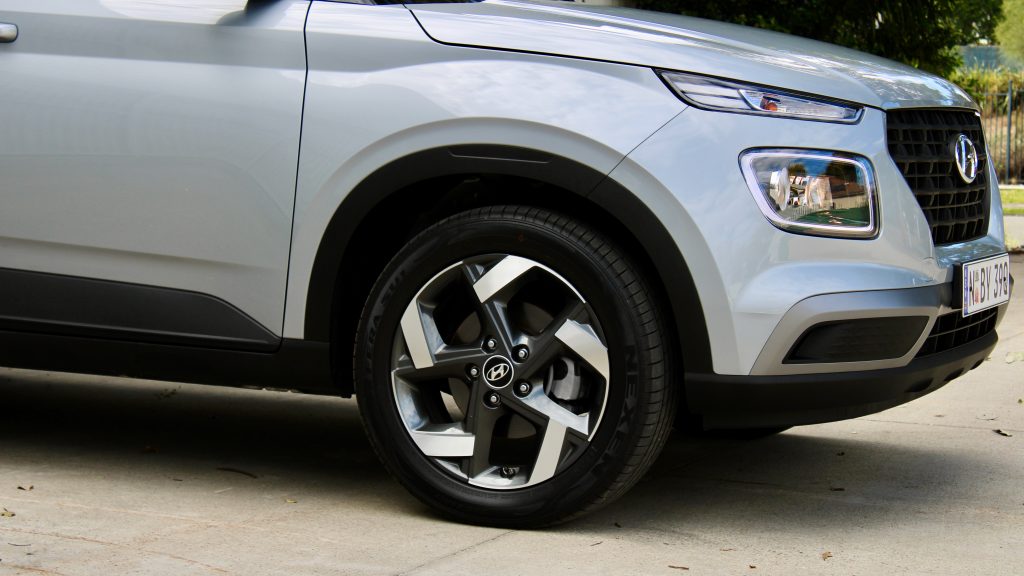
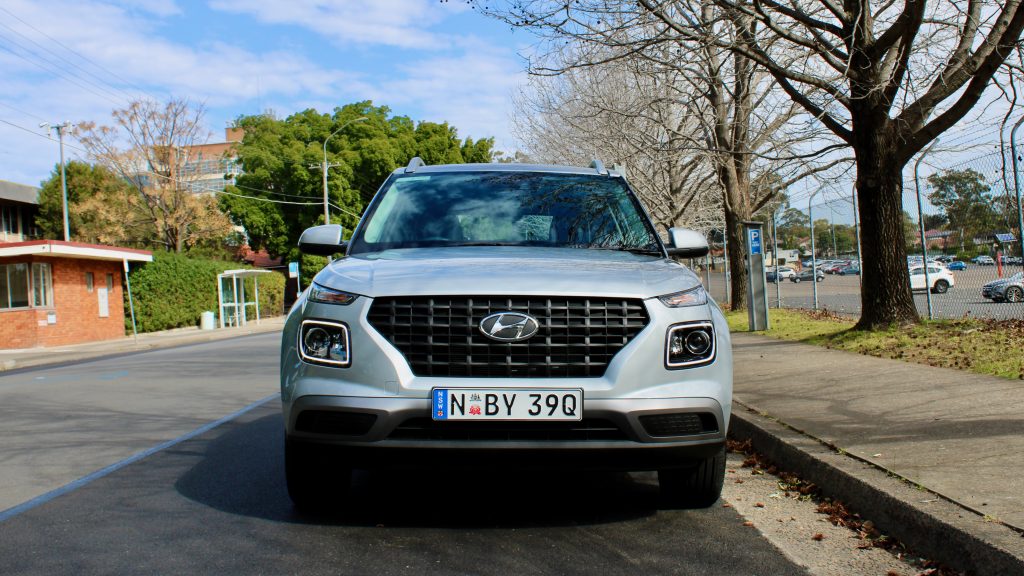
The 2021 Hyundai Venue Active also has a good amount of safety features including an alarm, automatic high beam, rear parking sensors with a reversing camera, tyre pressure monitoring, driver fatigue monitoring, lane departure warning, lane keep assist, low and high speed autonomous emergency braking (AEB) with pedestrian detection, a hill holder, forward collision alert and six airbags. It does only have a four-star ANCAP safety rating, though, and features such as LED lighting, adaptive cruise control and auto rear braking are unavailable.
The Kia Stonic Sport has some big ticket equipment items, such as keyless entry and push button start, satellite navigation and digital radio over the Venue Sport – and it’s just shy of $3,000 cheaper. The Mazda CX-3 Maxx Sport has other large equipment items including push button start, an electric park brake, blind-spot monitoring, rear cross-traffic alert with rear auto braking, satellite navigation, rain-sensing wipers, a dual exhaust system and digital radio over the Venue Active but the Venue counters with an alarm, lane departure warning, lane keep assist, wireless Apple CarPlay and Android Auto, driver fatigue monitoring, automatic high beam, larger 17-inch alloy wheels, cornering lights and a larger 8.0-inch touchscreen.
We would like to see the addition of an automatic driver’s window (at least), satellite navigation, LED lighting, keyless entry and blind-spot monitoring with rear cross-traffic alert to the 2021 Hyundai Venue Active. All of these come standard on the Mazda CX-3 Maxx Sport (bar the keyless entry), which we think is better value than the 2021 Hyundai Venue Active. There’s also more to consideration in that the mid-spec variant of the Venue, which is the cheapest car Hyundai sells locally, is almost $30,000 drive away – we think the Venue needs a big price cut to achieve greater sales. A base model i30 auto (currently $27,490 drive away) is much better value for money.
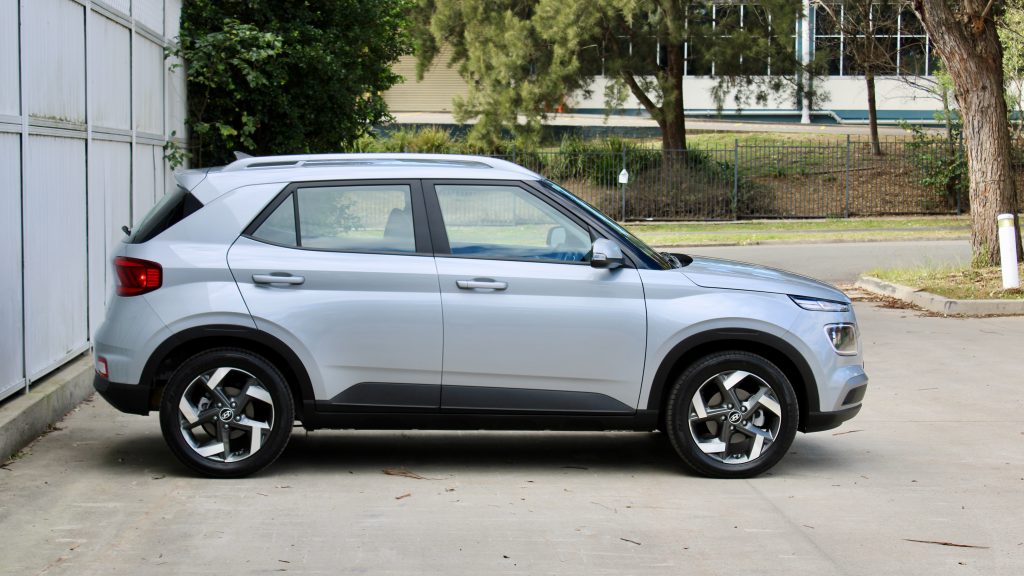
The only option for the Venue is metallic paint, which comes at a $495 premium. The standard colour that is available is ‘Polar White’ while ‘Phantom Black’, ‘Intense Blue’, ‘The Denim’, ‘Fiery Red’, ‘Cosmic Grey’ and our test car’s ‘Typhoon Silver’ are metallic options.
Performance & Economy: 6.5/10
The sole engine option in the 2021 Hyundai Venue in Australia is a 1.6-litre four-cylinder petrol engine that produces 90kW of power and 151Nm of torque. Peak power arrives at 6,300rpm, while peak torque comes in from 4,850rpm – how high these figures are produced is a clue to the car’s drivability. The engine can feel a little sluggish when accelerating but for an urban SUV that’s main purpose is to cruise the suburbs it is more than acceptable. It’s just that the engine itself is loud and thrashy, and its noise never goes away. Even at highway speeds, it’s still revving at around 2,000rpm thanks to its short gearing.
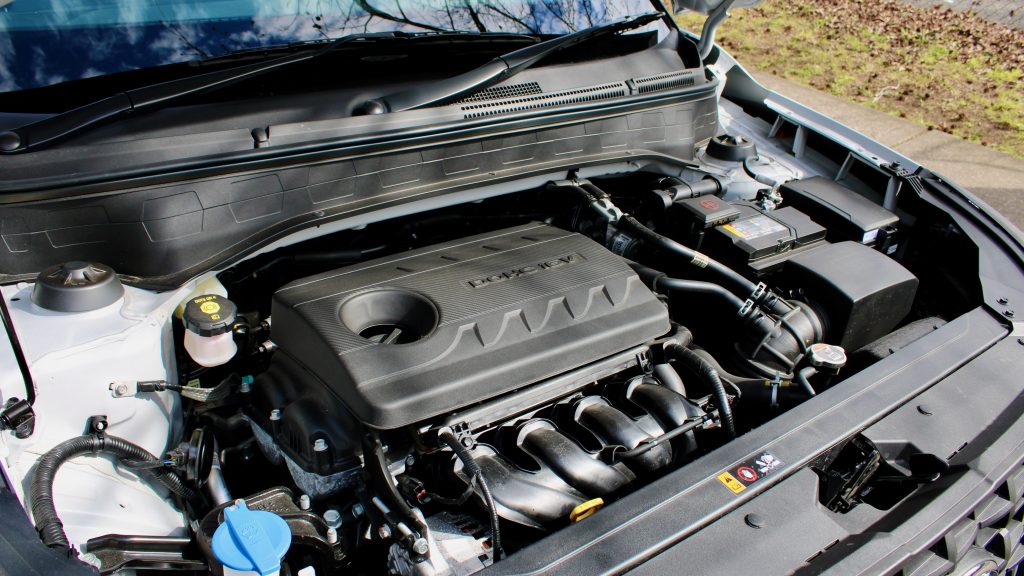
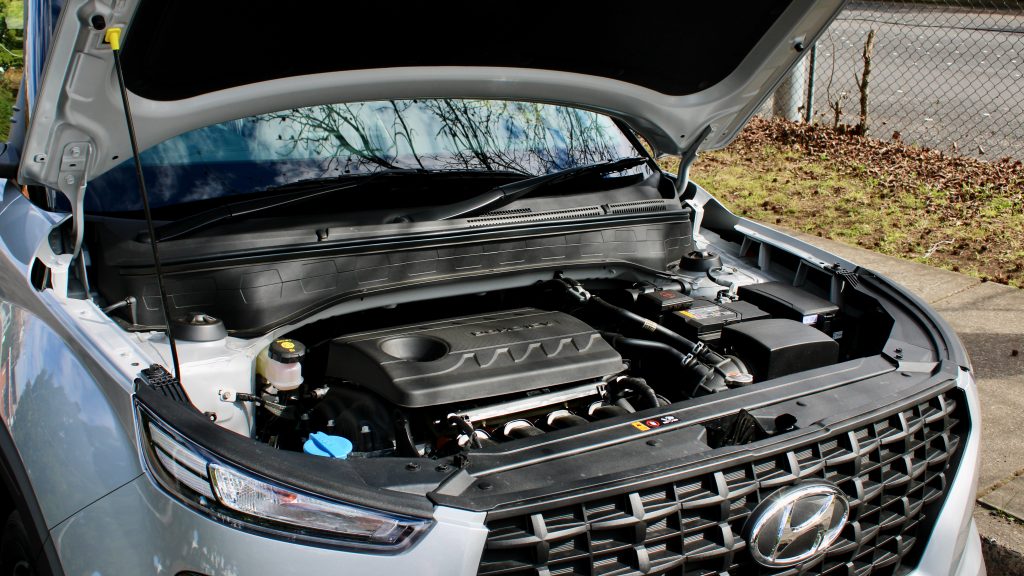
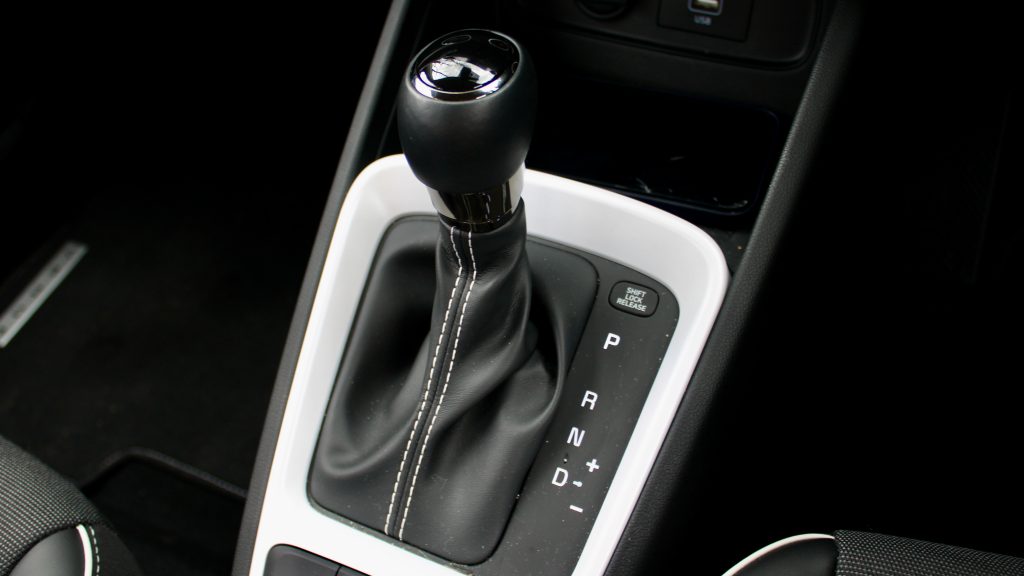
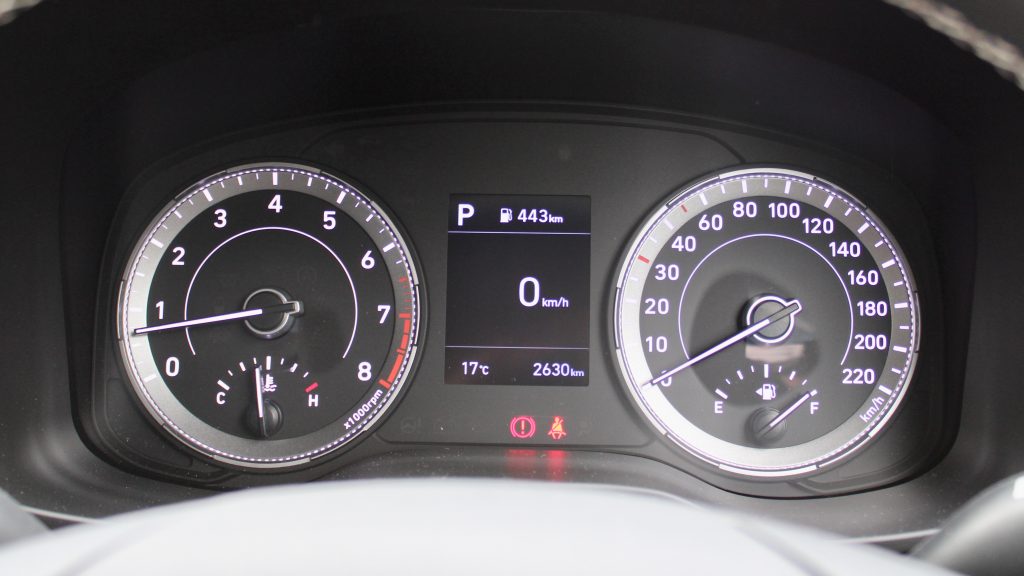
It is worth noting overseas you can have the venue with Hyundai’s 1.0-litre turbocharged three-cylinder engine producing 88kW of power and 172Nm of torque. We think this engine would be a lovely addition to the Venue range in Australia and would provide the car with better performance and fuel economy. Australians do see this engine in the top spec Kia Stonic GT-Line.
The 2021 Hyundai Venue Active can be had with either the standard six-speed manual transmission or the optional six-speed torque converter automatic transmission (for $2,000). Our test car was equipped with the automatic and it is a rather smooth unit. It can be a little slow to respond to throttle movement though, but for everyday driving it is more than acceptable.
The Kia Stonic Sport comes with a 1.4-litre four-cylinder engine that produces 74kW of power and 133Nm of torque and as we said when we reviewed it, it just isn’t enough engine – it’s somehow even worse than the Venue. The 2.0-litre engine in the Mazda CX-3 produces 110kW of power and 195Nm of torque, which is 20kW and 44Nm more than the Venue – seemingly muscular by comparison, and a lot more refined than its South Korean competitors.
The claimed average fuel consumption figure for the 2021 Hyundai Venue Active is 7.2L/100km for the auto (7.0L/100km for the manual) and in our week spent with the Venue driven in mostly urban environments, we saw a fuel consumption figure of just over 9.0L/100km, which is high. The Kia Stonic Sport has a claimed average fuel consumption of 6.7L/100km for the auto and 6.0L/100km for the manual. The Mazda CX-3 Maxx Sport has a figure of 6.6L/100km for the manual and 6.3L/100km for the auto.
Ride & Handling: 8/10
Like other Australian-spec Hyundai products, the ride and handling of the 2021 Hyundai Venue Active is Australian-tuned to deal with our subpar road network. As a result, the Venue handles potholes and speed humps exceptionally well, especially for something with such a short wheelbase. For a small SUV, the ride feels remarkably composed and well sorted. The Mazda CX-3, by comparison, is on the firmer side of things even though it has smaller 16-inch wheels.
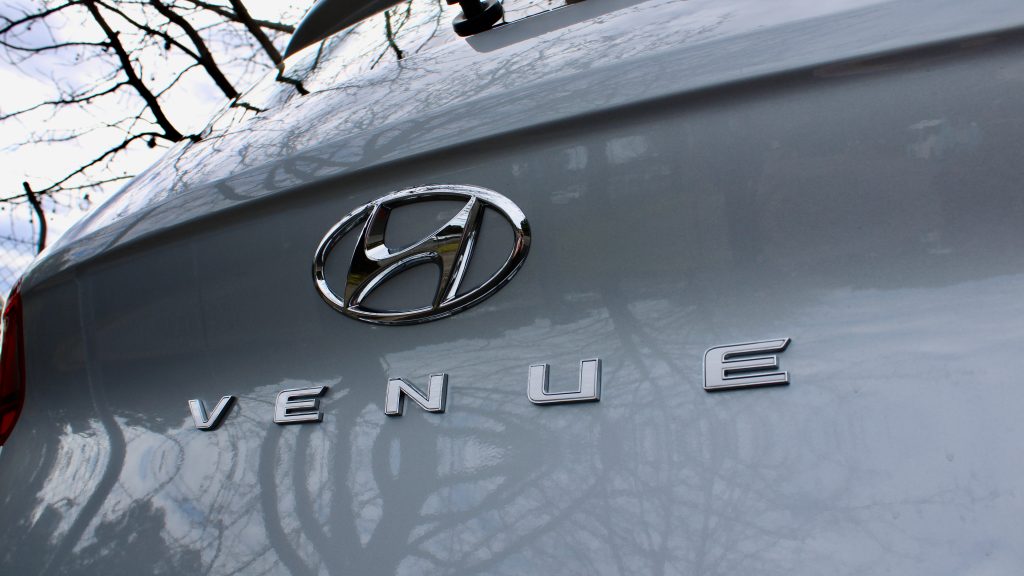
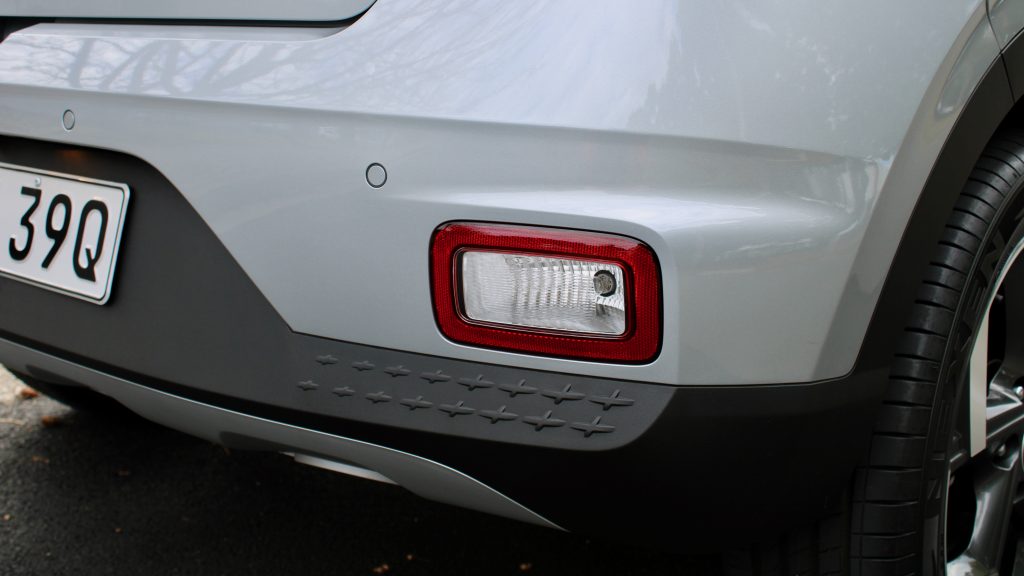
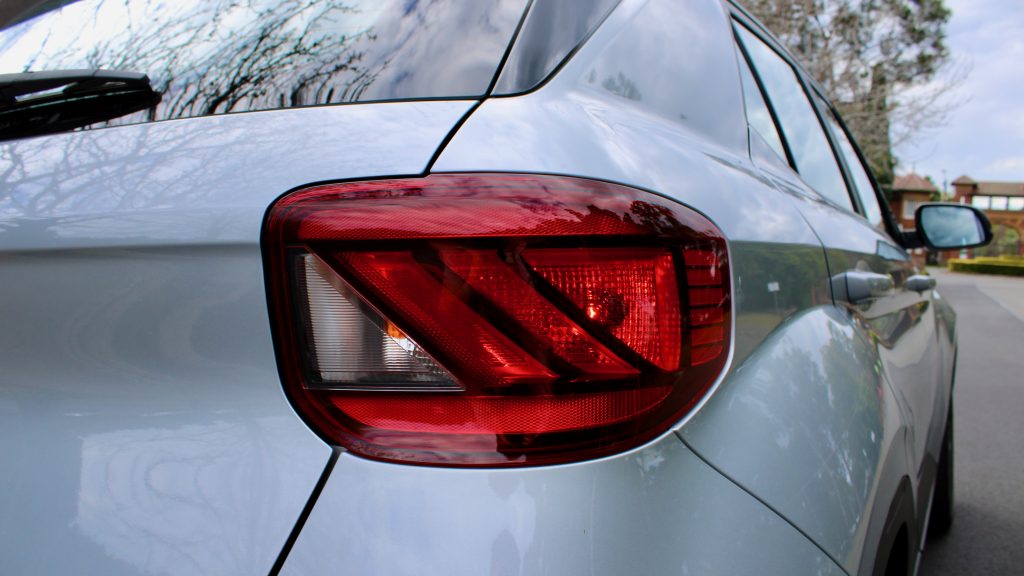
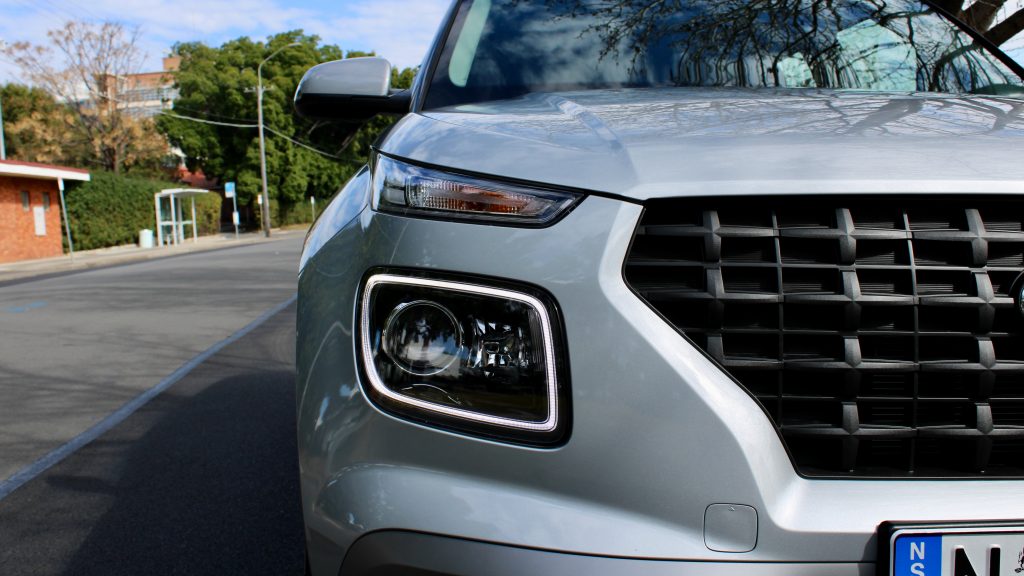
Being an SUV the Hyundai Venue doesn’t handle like a sports car, but it’s not meant to. It does hold its own around corners but because the ride is on the softer side and there is a little bit of body roll. In comparison the Mazda CX-3 handles a little better and have less body roll, this is likely due to the Mazda’s lower body height and firmer suspension. The steering in the Hyundai Venue feels more direct and less heavy than the CX-3.
The Venue has a variety of different safety systems on board that all work to make it a safer car. Being a Hyundai product the Venue’s lane departure warning is a little intrusive, luckily this is easily turned off with a button to the right of the steering wheel. The forward collision warning is quite good and isn’t overly sensitive.
Interior & Practicality: 7/10
Considering its low entry price, the interior of the 2021 Hyundai Venue Active is a nice place to be – it is well designed and also offers a good amount of practicality. The seats have a nice design to them and are surprisingly comfortable for the class, while there is also a good amount of tech in the Venue’s interior.
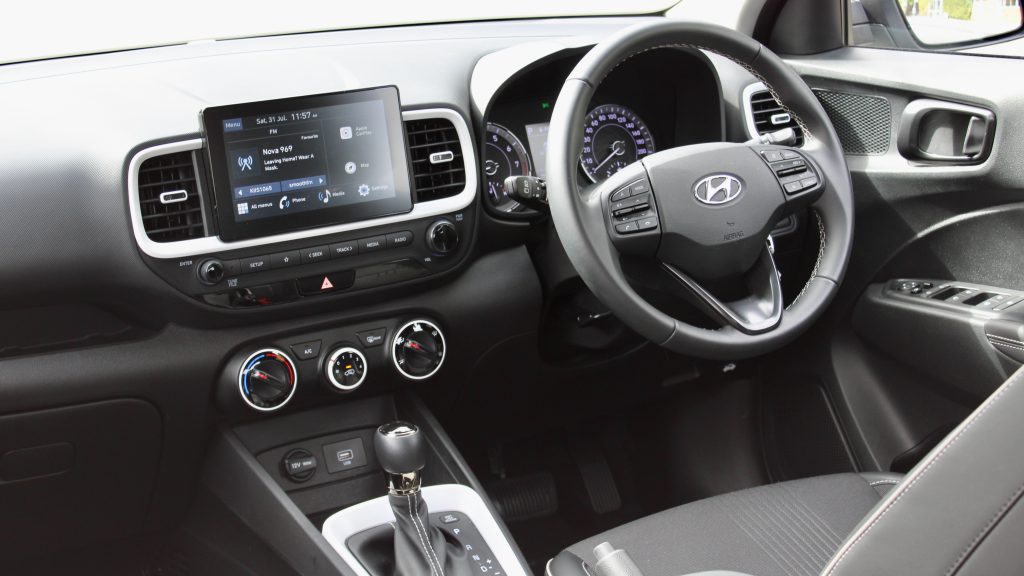
The quality of the interior varies. The seats are covered in a tasteful cloth material and a durable faux leather on the sides, plus the steering wheel and gear knob are covered in a nice leather. But on the other hand, the door panels, dash and centre console are covered in thin and scratchy hard plastic. This caries over into the rear doors and it feels as though the Venue’s interior has been built to a price – a soft touch portion of the dash wouldn’t hurt to make the interior feel a little more premium, as would an automatic window of any kind.
The interior storage in the cabin of the Venue Active is rather good though. There is a place to put your phone and wallet in front of the gearstick – though it would be nice to see a wireless phone charger here – and a deep centre console, a reasonable glove box, a handy storage shelf above the glove box, reasonable door pockets and two cupholders behind the gear knob.
The 8.0-inch touchscreen that sits a top the 2021 Hyundai Venue Active’s dashboard is easy to use and offers great functionality. There are short cut keys under the screen to go between various menu’s and the screen itself has a nice resolution making it easier to see. There is no navigation, but it is easy to connect the wireless Apple CarPlay or Android Auto and use the maps from your phone. The rear view camera is also a decent quality and has guidance lines to help when reversing.
The rear seats in the Venue are much more accommodating than both the Kia Stonic and Mazda CX-3. There is more knee, shoulder and head room than the rivals and you can seat two adults comfortably back there or three kids. There are also ISOFIX child seat ports in the back so attaching a child seat is a breeze, and this is helped by the wide door aperture. Unfortunately the only rear amenity is a passenger side map pocket in the rear of the passenger seat. There is no arm rest, rear cup holders, no charging ports and no coat hooks – and worse still, there are no vents, which is something that Indian-made Venues get. The Mazda CX-3 at least has a rear fold down centre arm rest with cupholders.
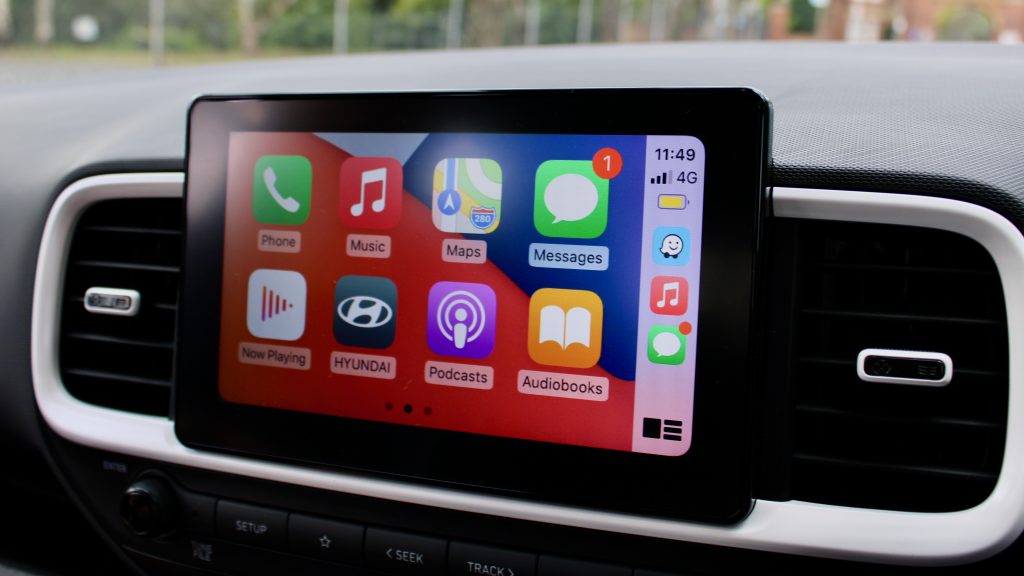
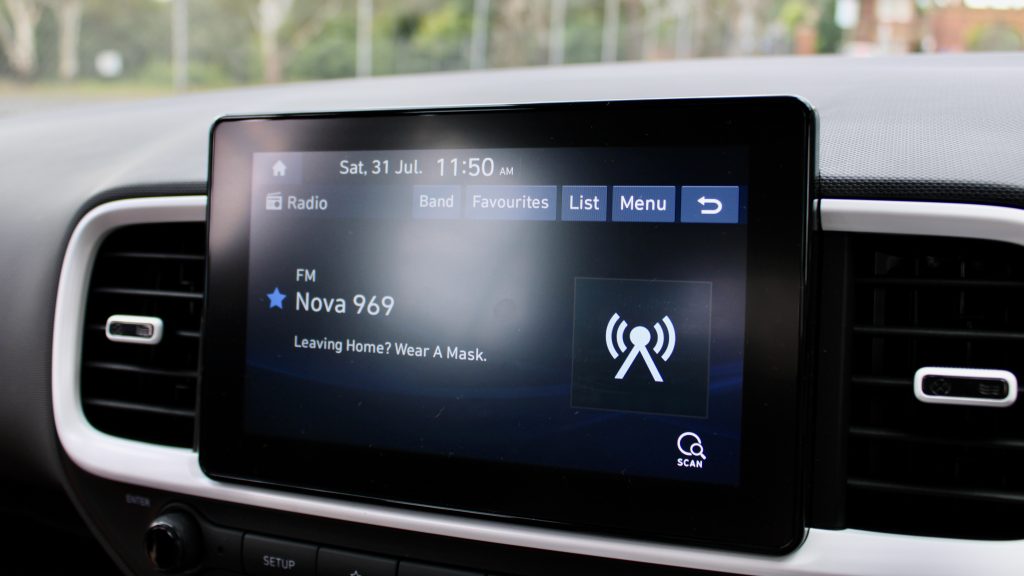
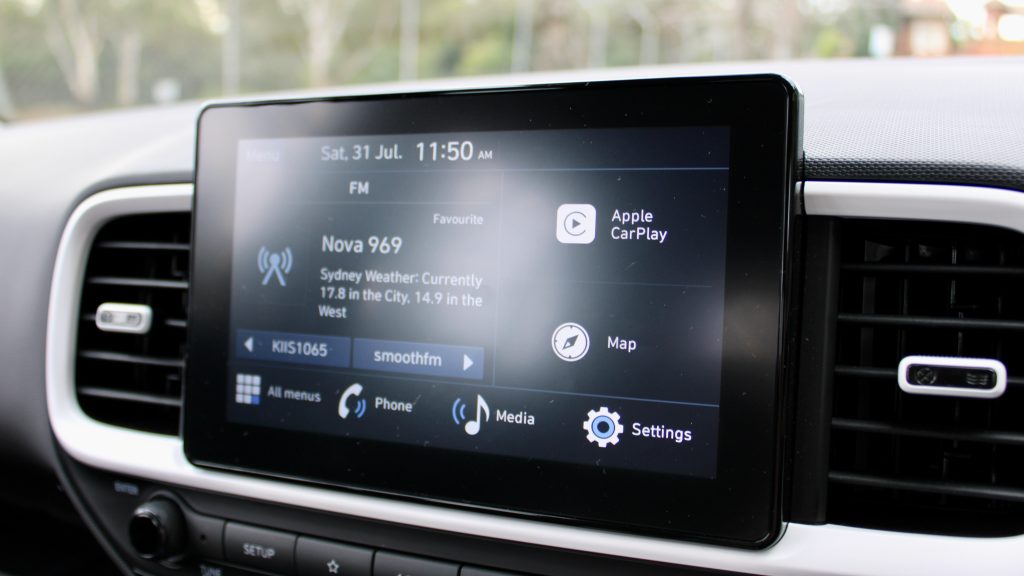
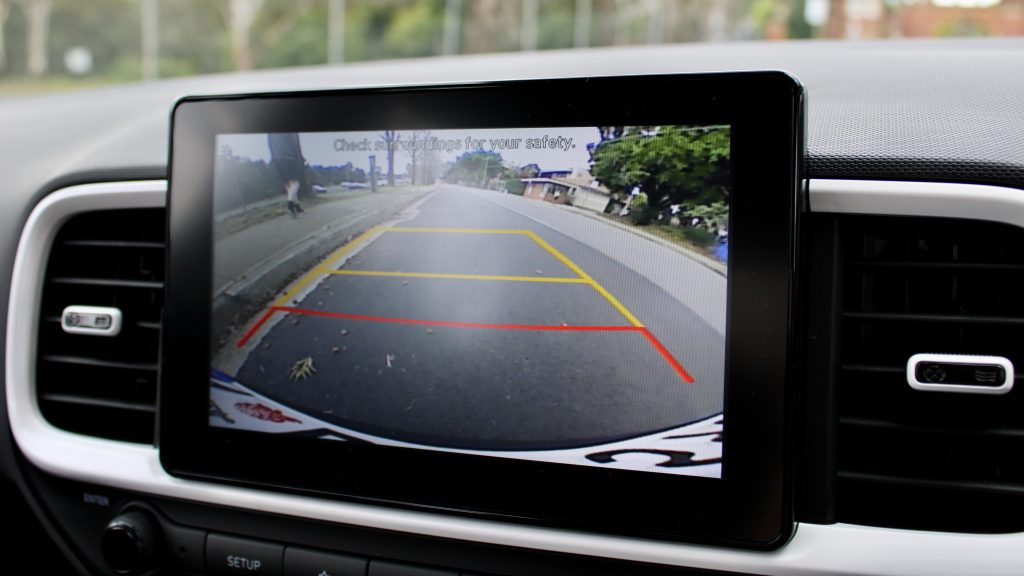
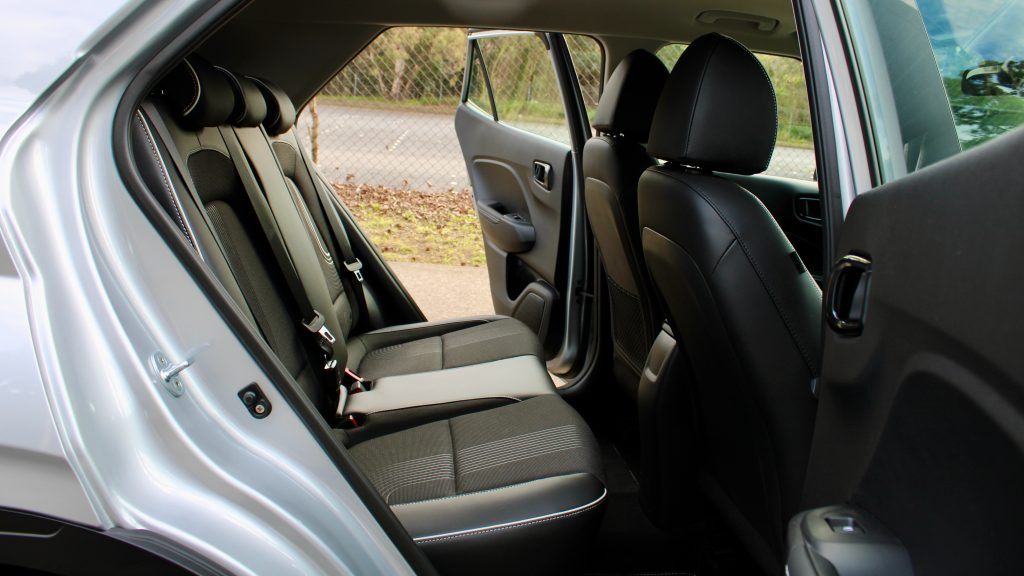
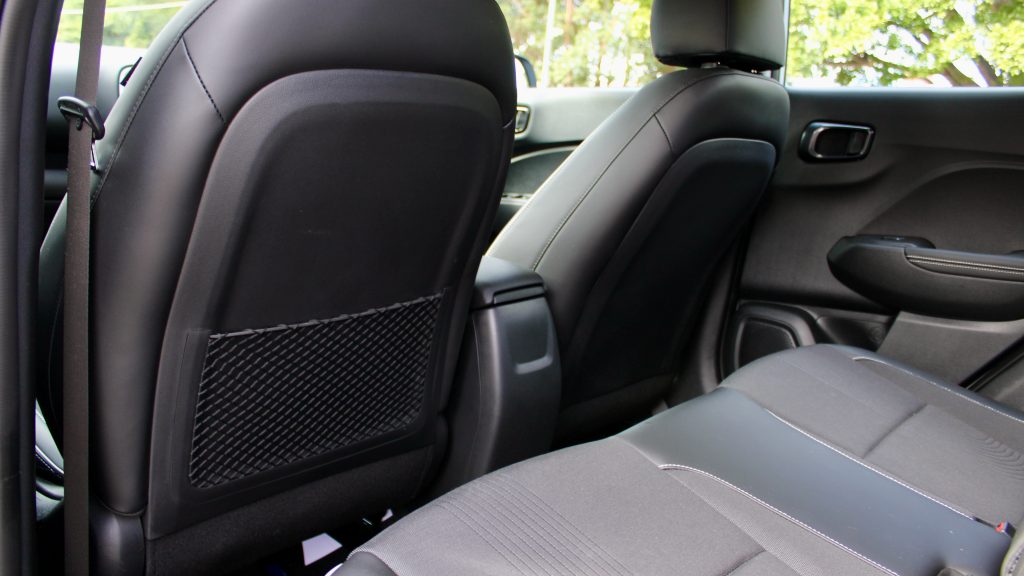
With the rear seats in place there is 355-litres of cargo space in the boot of the 2021 Hyundai Venue Active and folding them opens that up to 903L. There is an adjustable boot floor that can be moved to make the floor flat when the rear seats are folded down and the ability to place the cargo cover behind the rear seat in case you need to move tall items. By comparison, the Kia Stonic has 352-litres of cargo space with the rear seats in place and 1,155-litres with them folded and the Mazda CX-3 has just 264-litres available with the seats in place, but this does open up to 1,174-litres with the rear seats folded. The Venue has the biggest boot with the rear seats in place but the smallest with the seats folded down – but thanks to its clever features, it’s the most useable.
Service & Warranty: 9/10
The 2021 Hyundai Venue Active comes with the brand’s five-year unlimited kilometre warranty. This is the same warranty offered by Mazda for the CX-3, though a CX-3 comes with five-years of roadside assist whereas the Venue comes with only 12 months. The Kia Stonic comes with Kia’s seven-year/unlimited kilometre warranty with the same roadside assist system as Hyundai.
Servicing the Venue comes around every 12-months or 15,000km, which is the same interval as the Kia Stonic but the Mazda CX-3 needs servicing more frequently every 12-months or 10,000km. The price of servicing the Venue over five-years or 75,000km is $1,575 ($315 per service). Compared to the $1,958 ($391.60 per service) that it would cost to service a Kia Stonic Sport over the same period of time, the Venue looks like rather good value. The Mazda CX-3 costs $1,775 over five years ($355 a service) but that’s only to 50,000km thanks to the Mazda’s shorter service intervals.
2021 Hyundai Venue Active DiscoverAuto Review: 7.3/10
The Hyundai Venue is a small SUV that offers practicality, style and a good amount of tech at under $30,000 drive away. Although we do think that it could be better value, adding in the 1.0-litre turbocharged engine from the overseas Venue, keyless entry and other kit such as navigation and LED headlights and we would think the purchase price would be more justifiable. But with that old world thrashy engine, it’s just too expensive.
There are good qualities to the Venue that should win it more friends though. It rides and handles well thanks to Hyundai’s local tuning program, it’s much more spacious than its tiny sizing would lead you to believe, its aftersales program is excellent and it offers a lot of safety equipment as standard. It also features a bit of character with its cute styling, which is somewhat of a rarity in today’s vanilla new car market. But with such high pricing and a lack of mechanical finesse, buyers can do better than the Venue Active in our opinion – walking across the showroom floor to an i30 hatchback being one of them.
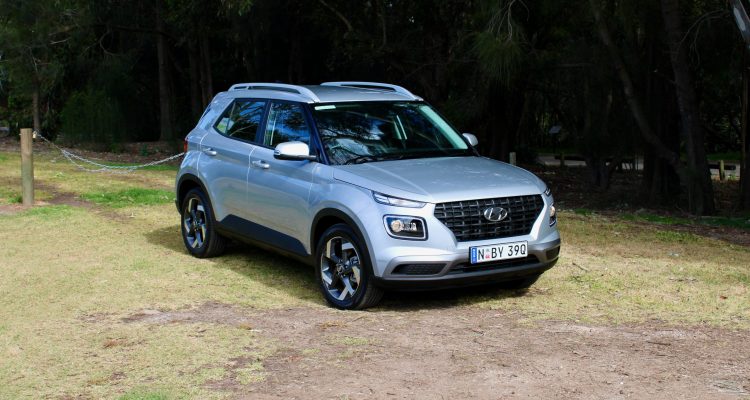
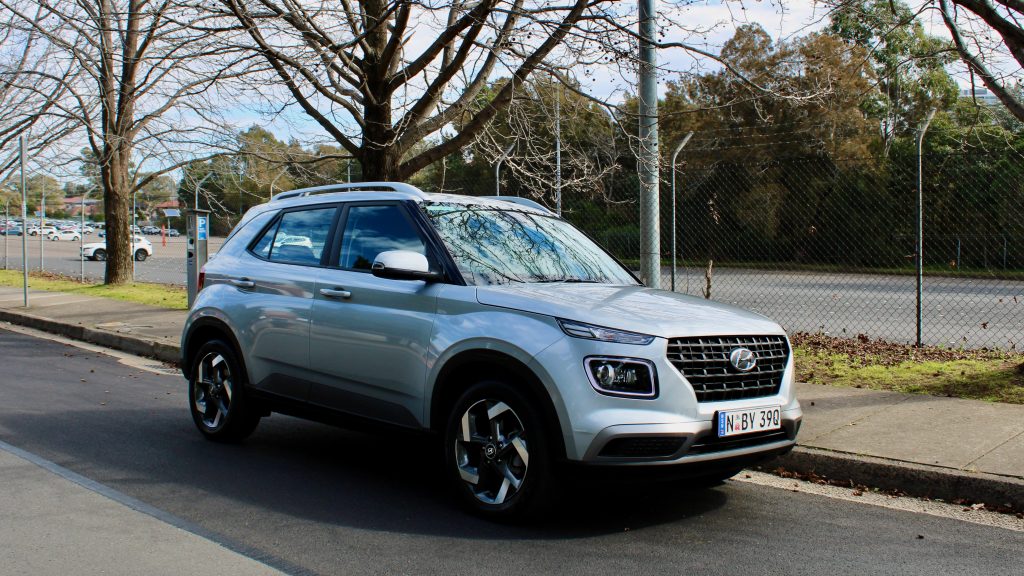
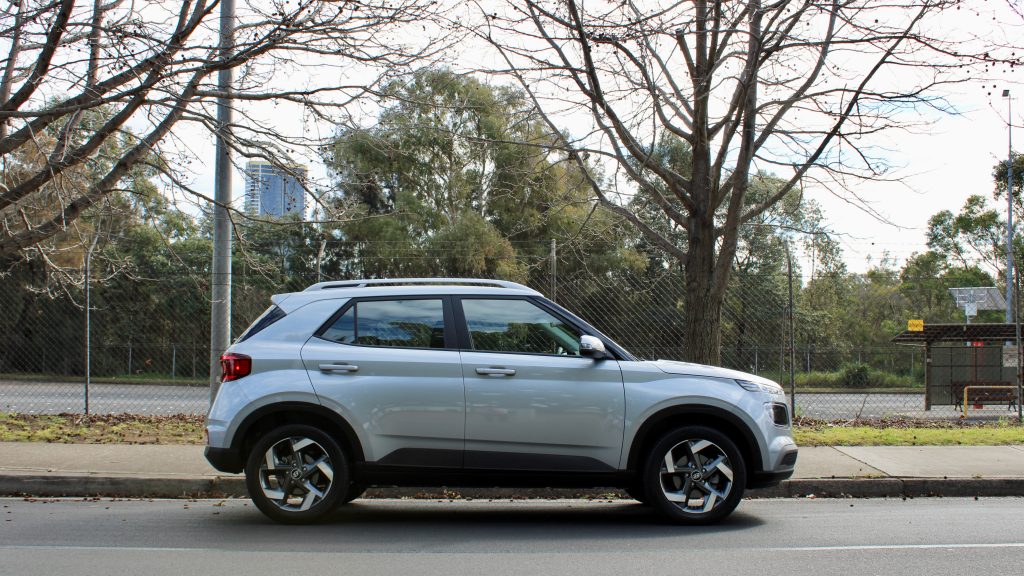
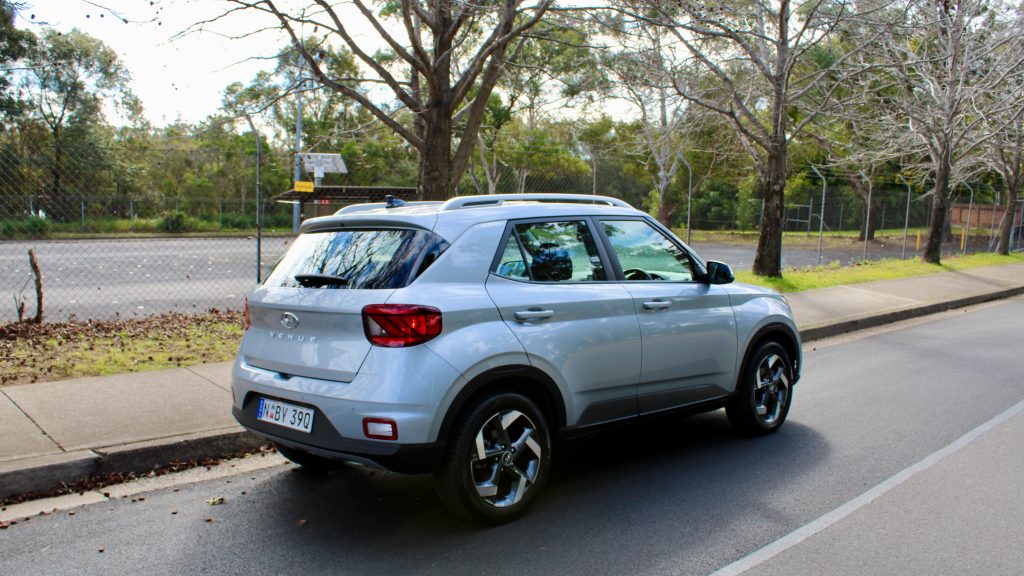
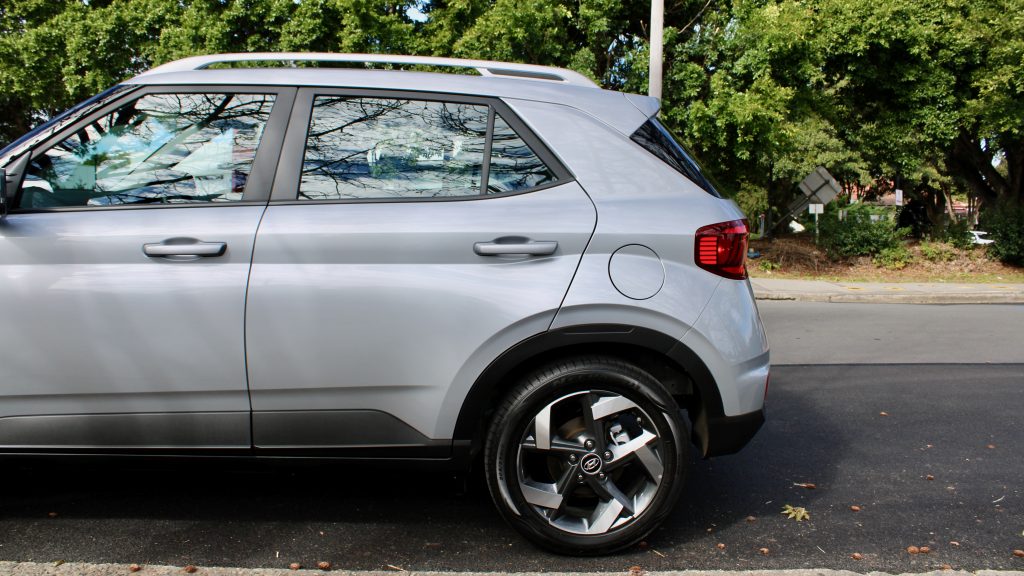
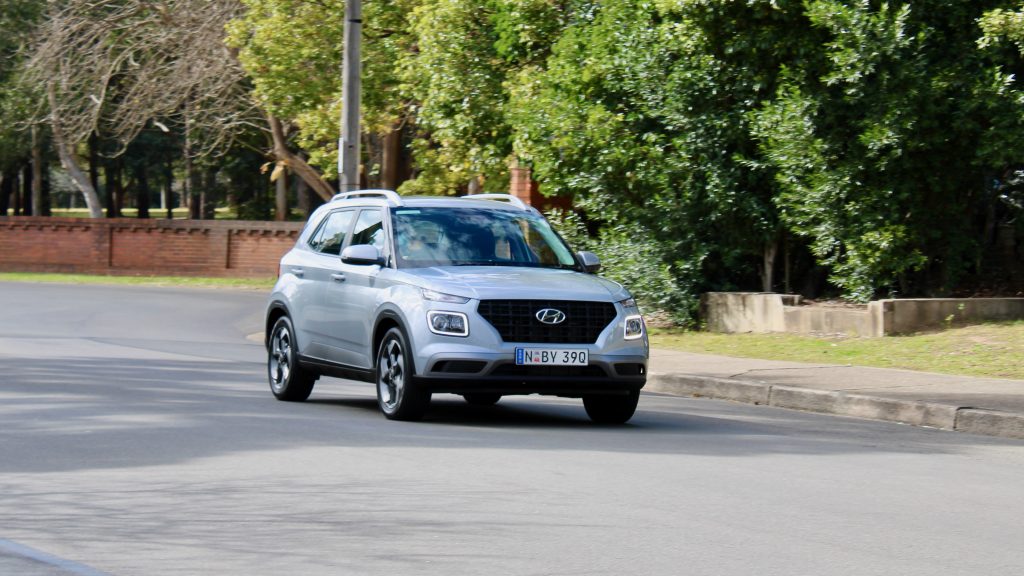
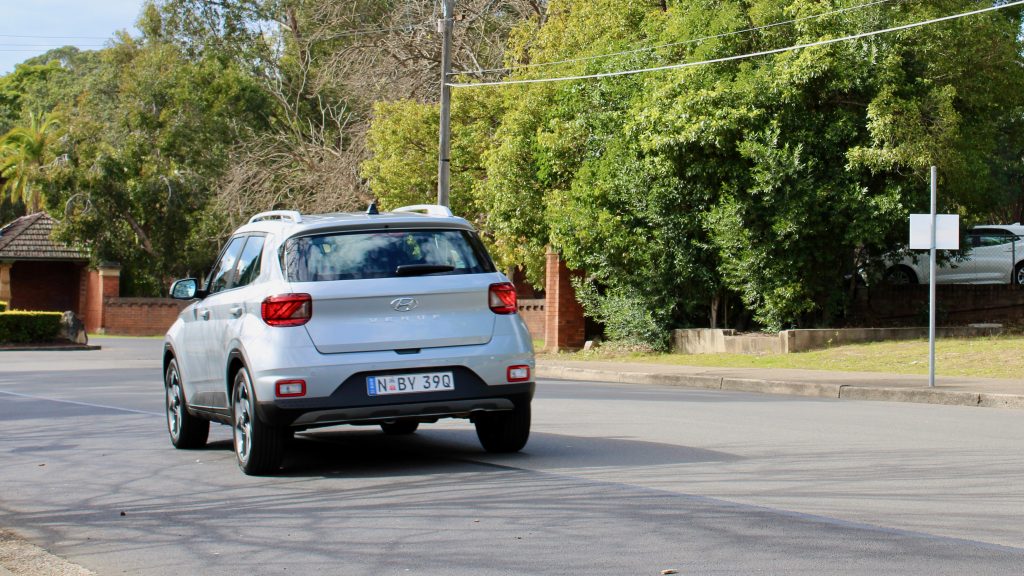
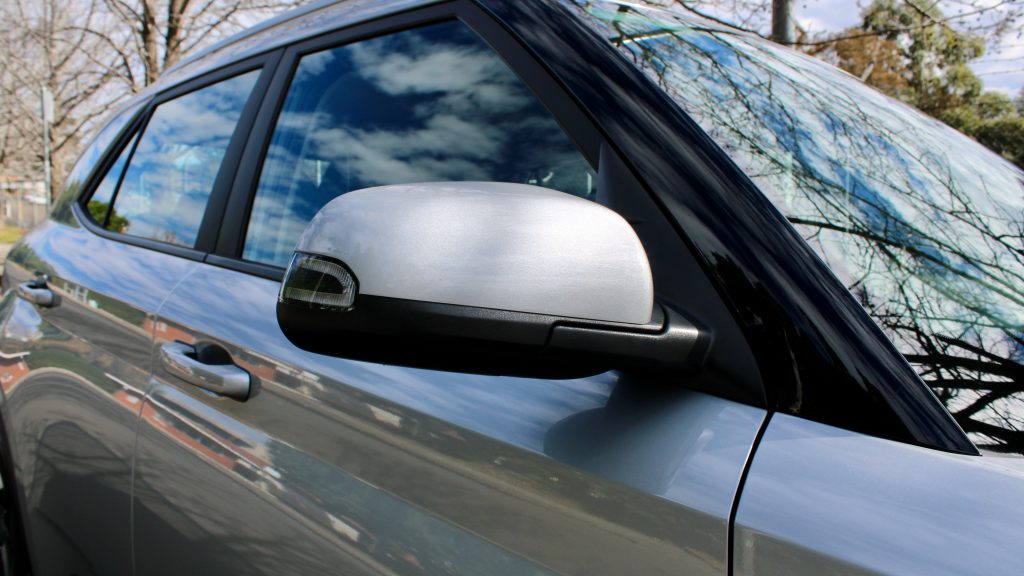
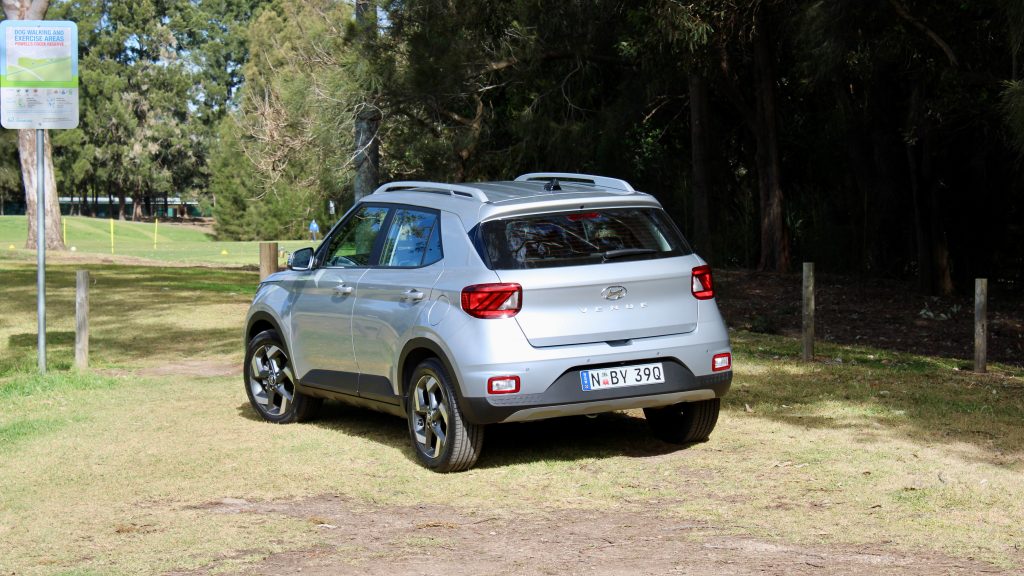
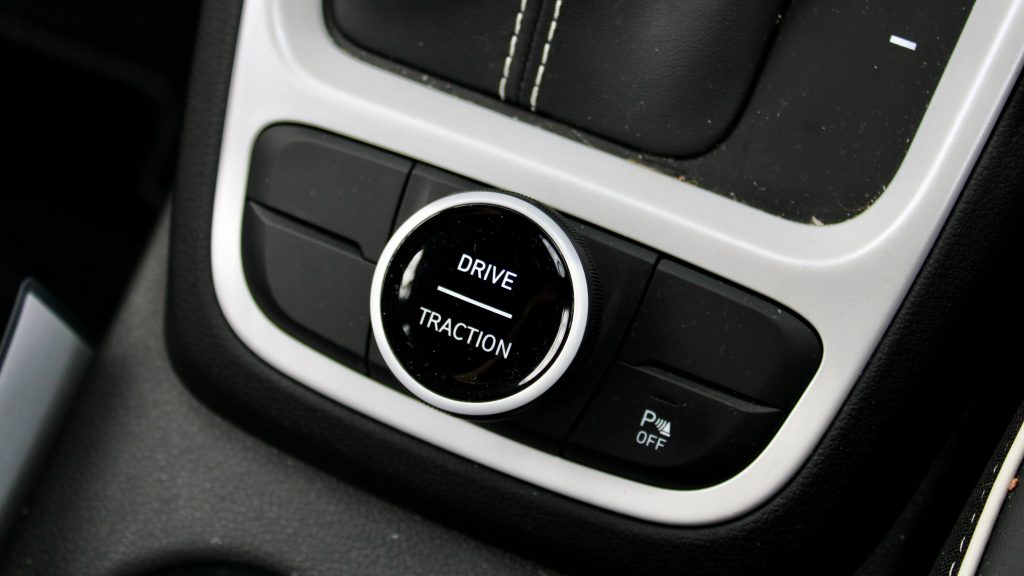
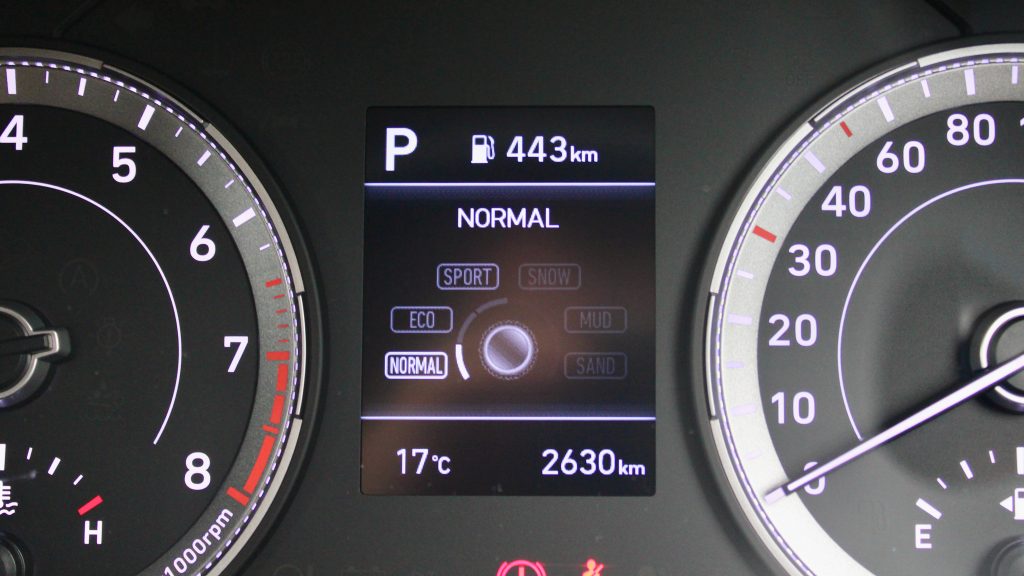
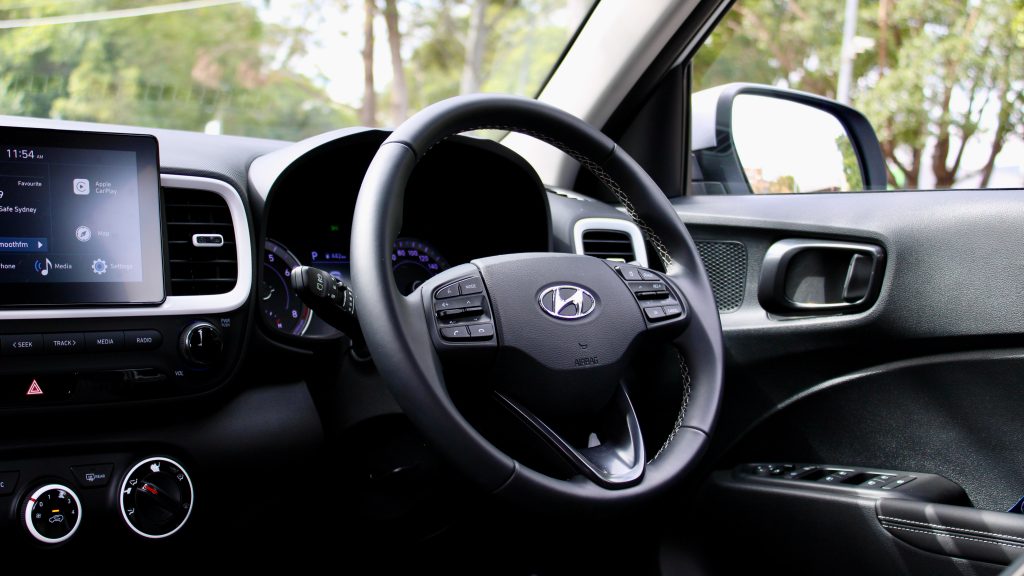
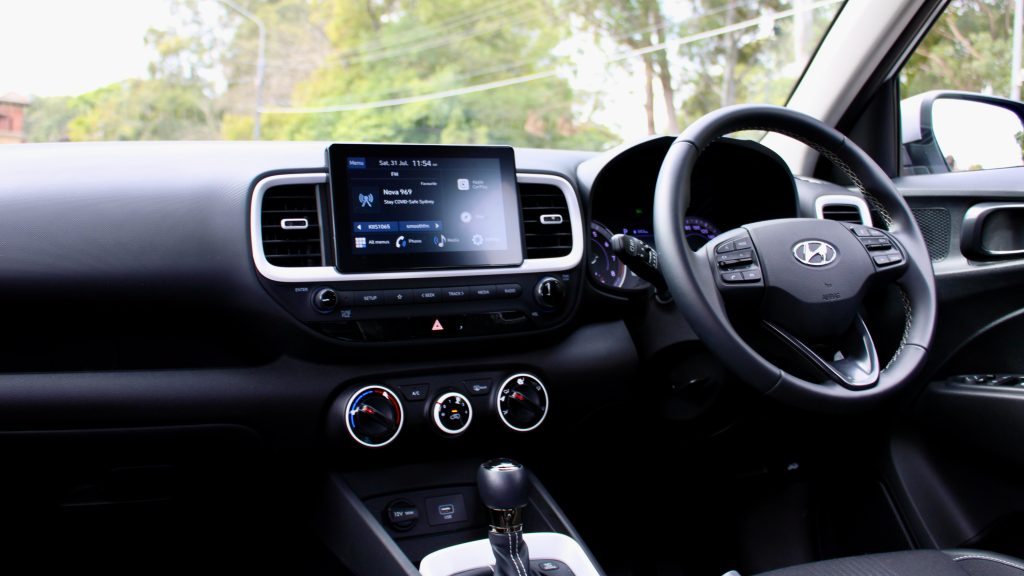
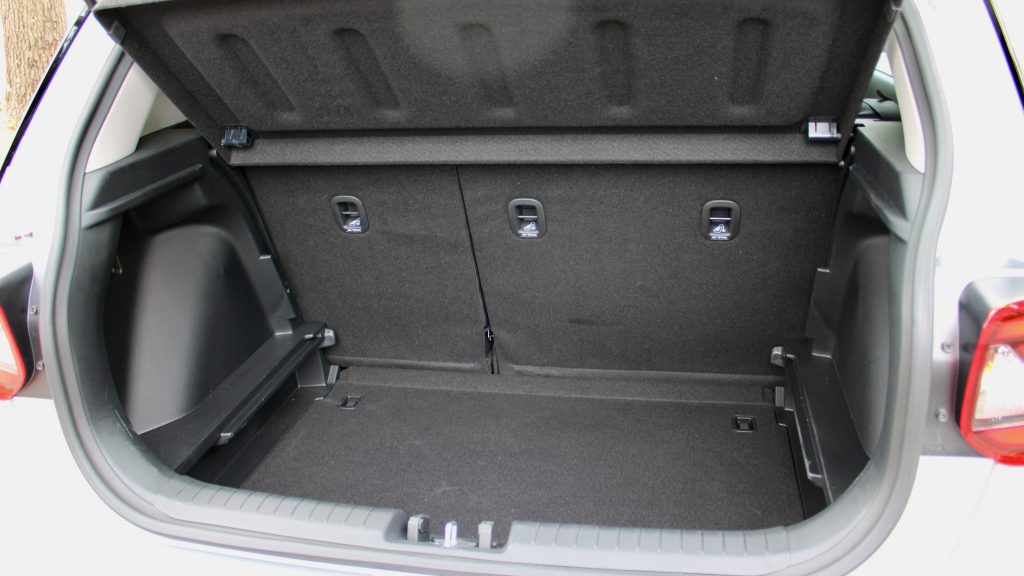
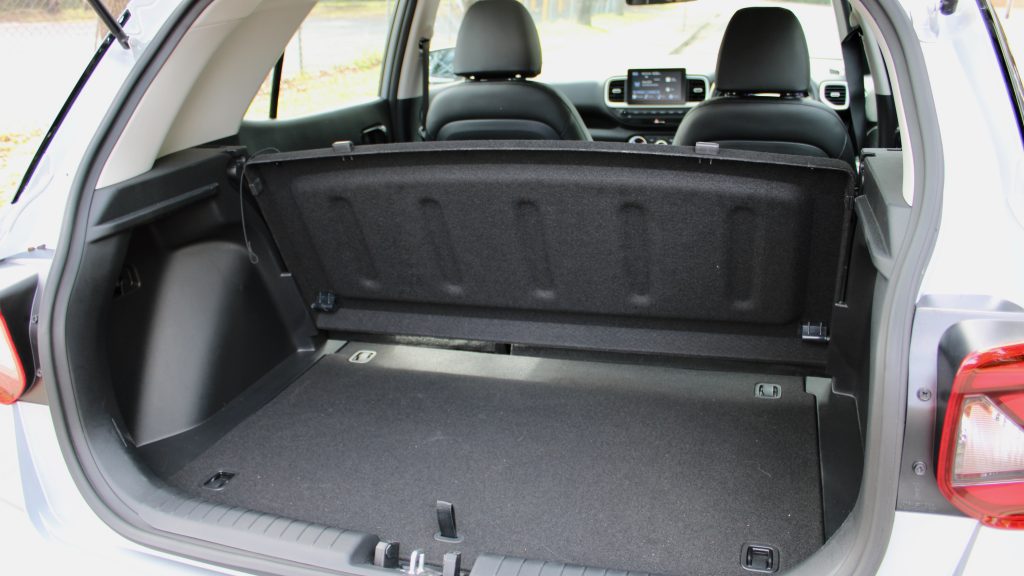
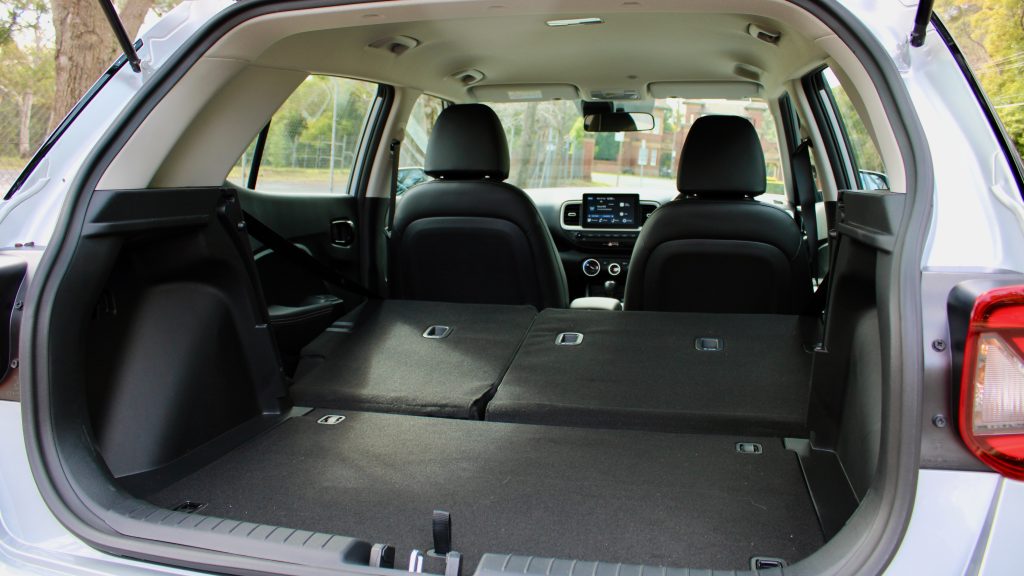
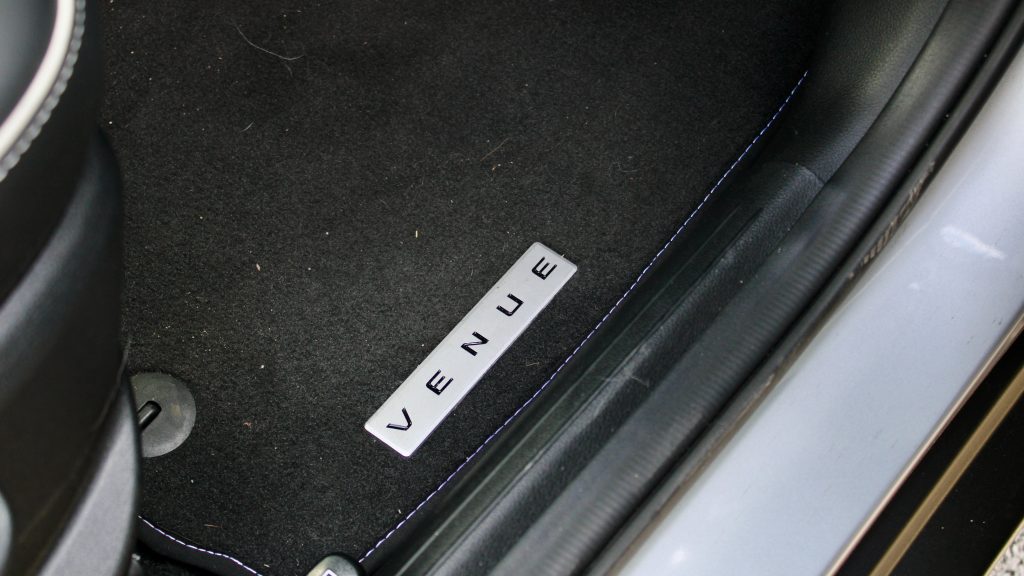
Leave a Reply